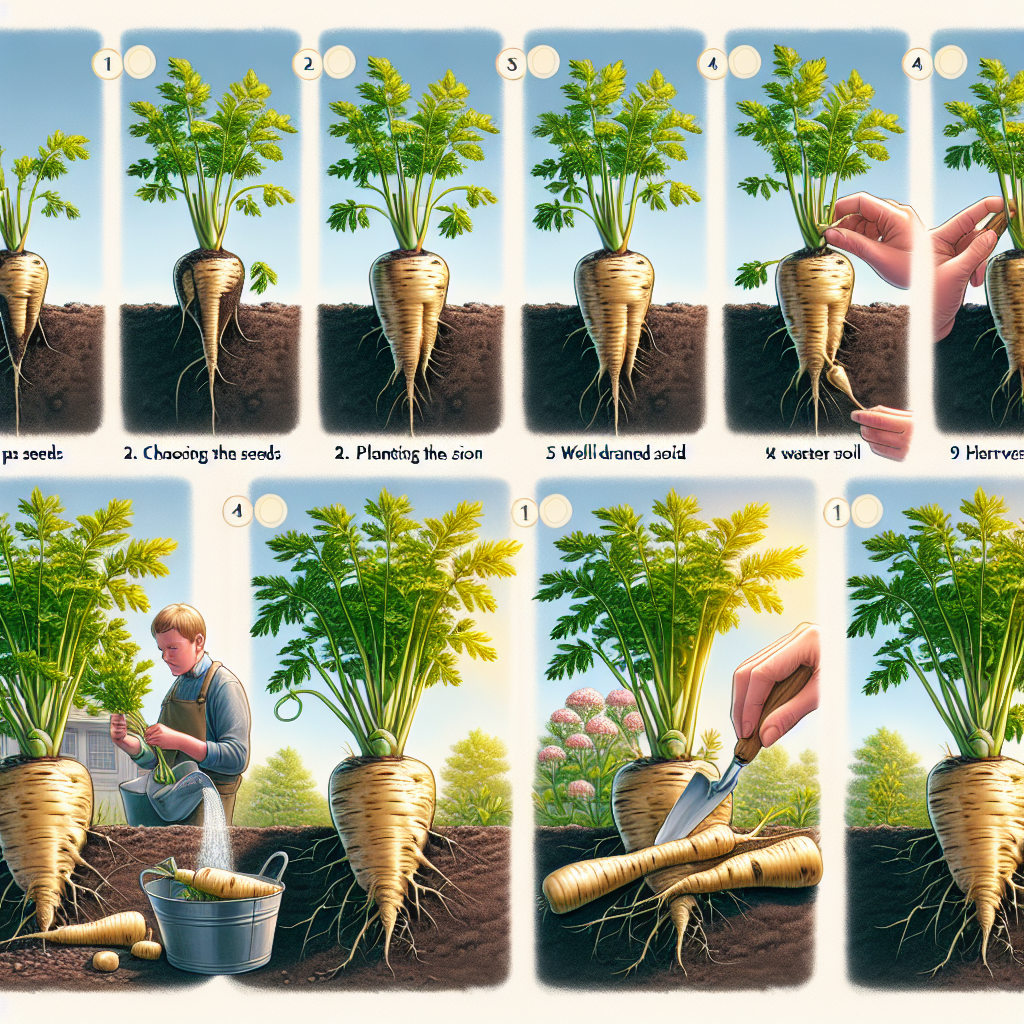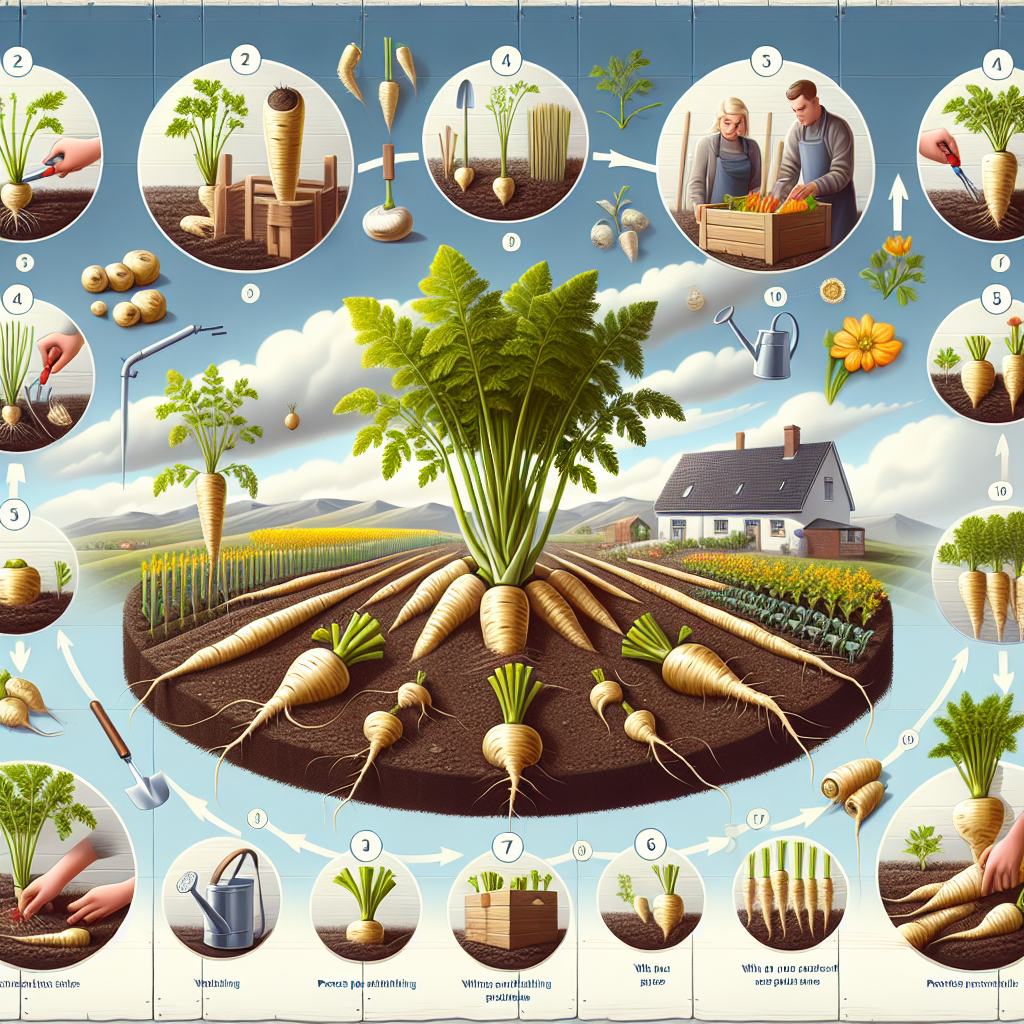The Complete Guide to Growing Parsnips Successfully
Parsnips are a versatile and nutritious root vegetable that can be enjoyed in a variety of dishes. With a sweet and earthy flavor, they add depth to soups, stews, roasts, and even desserts. Growing your own parsnips ensures you have a fresh supply of this flavorful vegetable at your fingertips. However, successful parsnip cultivation requires some knowledge and careful attention to detail. In this article, we will provide you with a complete guide on how to grow parsnips successfully.
1. Selecting the Right Variety
Choosing the right parsnip variety is crucial for successful growth. Some popular varieties include ‘Hollow Crown’, ‘Gladiator’, and ‘Tender & True’. Consider factors such as taste, maturity period, and disease resistance when selecting the variety that suits your preferences.
2. Preparing the Soil
Parsnips thrive in well-draining soil with good fertility. Before planting, prepare the soil by removing any weeds, rocks, or debris that may impede their growth. Dig the soil to loosen it and incorporate organic matter like compost or well-rotted manure to improve its fertility and structure.
3. Sowing Seeds
Parsnip seeds are best sown directly into their final growing position as they have long taproots that make transplanting difficult. Choose a sunny location for your parsnip bed as they require at least six hours of direct sunlight per day.
Sow the seeds thinly at a depth of around half an inch (1-2 cm). To promote even germination, soak the seeds in water for 24 hours before sowing. Space rows 12-18 inches (30-45 cm) apart to allow room for mature plants.
4.Taking Care of Seedlings
As parsnip seeds take quite some time to germinate (up to three weeks), it is important to keep the soil consistently moist during this period. To prevent the soil from drying out, cover the bed with a layer of mulch or use a cloche. Be patient, as parsnips are notoriously slow germinators.
Once the seedlings emerge, thin them out to ensure proper spacing. Aim for a final spacing of 3-4 inches (7-10 cm) between plants within each row.
5.Watering and Fertilizing
Parsnips need regular watering to maintain their growth and prevent cracking or splitting. Water deeply once a week, providing around 1-1.5 inches (2.5-4 cm) of water per week. It is important to monitor soil moisture levels as overwatering can lead to root rot.

Fertilize your parsnips every three to four weeks with a balanced organic fertilizer or compost tea. Avoid excessive nitrogen fertilization, as it can result in lush foliage but stunted root development.
6.Weeding and Mulching
Weeds compete with parsnips for nutrients and moisture, so it is crucial to keep them under control. Regular weeding will prevent weeds from overpowering your parsnip plants and hindering their growth.
Mulching can help suppress weed growth, conserve soil moisture, and regulate soil temperature. Apply a layer of organic mulch such as straw or wood chips around your parsnip plants once they are established.
7.Pest and Disease Management
While parsnips are generally low-maintenance plants, they can be susceptible to certain pests and diseases. Common pests include carrot fly, aphids, and leaf miners. To deter these pests, you can use row covers or companion planting techniques with strong-smelling herbs like rosemary or sage.
Leaf blight and powdery mildew are common diseases that affect parsnips. Avoid overcrowding by thinning plants adequately to promote good airflow, which helps reduce the risk of fungal diseases. If necessary, use organic fungicides to control these diseases.
8.Harvesting and Storage
Parsnips are ready for harvest when their roots reach a desired size, typically around 12-18 inches (30-45 cm) in length. However, they can be harvested earlier if you prefer smaller roots.
Gently loosen the soil around the parsnip roots using a fork before lifting them out. Be careful not to damage the delicate roots during this process. After harvesting, remove the foliage and store the parsnips in a cool, dark place with high humidity. They can last for several months if stored properly.
In conclusion, growing parsnips successfully requires attention to detail and proper care throughout their growth cycle. With the right variety selection, soil preparation, sowing techniques, and maintenance practices, you can enjoy a bountiful harvest of delicious parsnips that can elevate your culinary creations throughout the year. Happy gardening!













